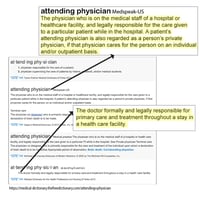In day-to-day work as a Physician Advisor, we frequently encounter cases that are primarily due to,...
Should CLINICAL DOCUMENTATION INTEGRITY SCRAP The COMPLIANT QUERY?
A Physician Advisor’s Perspective
The short answer is, no.
However, highly-effective Clinical Documentation Integrity (CDI) programs understand that the correct answer is not so black-and-white. Maximizing the potential of hospital based CDI, requires understanding the roles of each team member and maximizing their scope of practice.
Consider the following:
| THE STANDARD |
| A query is a communication tool or process used to clarify documentation in the health record for documentation integrity and accurate code assignment for an individual encounter in any healthcare setting. |
| A compliant query: – Does not lead the provider to a certain diagnosis. – Does include appropriate clinical indicators that support the query. |
| It is the position of ACDIS and AHIMA, that “Regardless of the credential, role, title, or use of technology, all healthcare professionals (whether or not they are ACDIS or AHIMA members) seeking to clarify provider documentation must follow compliant query guidelines.” ACDIS Guidelines for Achieving a Compliant Query Practice (2019 Update) https://acdis.org/resources/guidelines-achieving-compliant-query-practice%E2%80%942019-update |

Understanding the scope of practice for each team member and with an understanding of what constitutes a compliant query, let us discuss how a high functioning CDI program applies these concepts.
When there is no direct interaction with the treating physician, compliant queries are utilized by any member of the CDI team to obtain clarification regarding the patient’s diagnosis. These typically take the form of an EMR template, or a paper based form that is completed by the treating physician.
If there is a direct interaction with the clinical physician, either by phone or in person:
- The CPC must utilize the compliant query process,
- Clinicians such as a CDS or PA, may ask questions of the physician, to obtain adequate clarity around the clinical diagnosis,
- The PA may, under their scope of practice, discuss the potential diagnoses for the patient in question. Based on the PA ‘s clinical opinion of the patient’s presentation and objective findings, this discussion may include primary and secondary diagnoses that may not currently be documented by the attending physician.
Basis for Supporting a PA Discussing Potential Diagnoses with the Physician?
Many if not most hospitalized patients are seen by at least one consulting physician. Most of us would agree that the attending physician would typically defer to the physician consultant in the area covered by that specialty. For example, the hospitalist would typically defer to the infectious disease physician regarding the choice of antibiotic therapy. So too, the physician advisor should be considered a content expert with a more detailed knowledge around CDI. The PA acts as a bridge between the language of the clinician and the language of the revenue cycle.
SUMMARY
The CDI program is a critical program within hospitals and an increasingly important component in the outpatient setting. It is important for us to remember that the purpose for CDI. is to increase the precision of clinical documentation, which translates into accurate clinical data, reflecting a provider’s intent and clinical thought process in a manner that results in an accurate depiction of patient complexity within each episode of care. This increased precision and clarity in the documentation, has the potential for improving the safety, quality, and value of care provided to patients. High functioning CDI teams while remaining compliant, apply a range of tools including queries, questions and discussions in order to achieve the goals of the program.
| CASE DISCLAIMERS |
| Compliance does remain paramount. These opinions are my own and the reader should defer to their own organizations compliance policies. |
| Healthcare compliance is the process of following rules, regulations, and laws that relate to healthcare practices. While this covers a wide variety of issues. under CDI, most compliance issues relate to billing practices, privacy issues, and hospital policies and procedures. |
| It’s a common mistake to confuse the position papers of societies such as The American Health Information Management Association (AHIMA) or the Association of Clinical Documentation Improvement Specialists (ACDIS) with federally mandated rules and regulations. The society position papers do provide a vital structure for standardizing the work performed by those within CDI. Yet, healthcare documentation is becoming increasingly complex due to the impact of electronic health records, artificial intelligence, and shifting payment models. The strict query guidelines that were originally designed for coding professionals may no longer align with a CDI team that includes Nurses (RN) and PA. There is a risk that limiting the team to a query format may cause us to fail to meet the goals of CDI. |
RESOURCES
https://acdis.org/resources/guidelines-achieving-compliant-query-practice%E2%80%942019-update
CONTENT DISCLAIMER: The contents of text/graphics and other materials made by JBH Solutions LLC are for informational purposes only. The content is not intended to be a substitute for professional medical advice, diagnosis, or treatment. Always seek the advice of a second physician opinion. Reliance on any information provided by JBH Solutions, leadership or employees appearing in content is at your own risk but we do hope you’ll find it useful and helpful.

